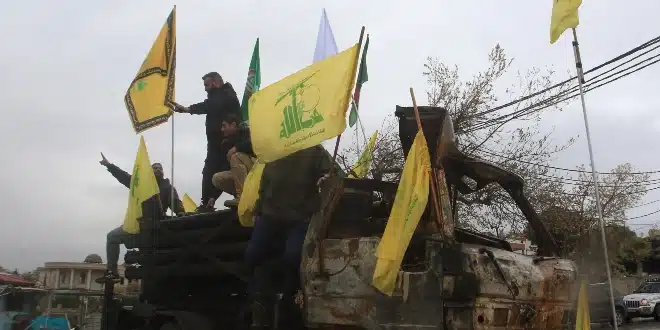The long-standing prospect of Hezbollah surrendering its weapons may be closer to reality as U.S. pressure intensifies on both Lebanon and Iran. Analysts believe Hezbollah’s military grip has been significantly weakened by over a year of clashes with Israel, including an intense bombing campaign and Israeli ground operations that targeted the group’s infrastructure and senior leadership.
Following the conflict, Lebanon made swift political progress, electing a president and forming a government after more than two years of deadlock, a development that many interpret as a shift in the internal balance of power.
David Wood of the International Crisis Group noted that the war altered the power dynamics within Lebanon, making the idea of Hezbollah engaging in disarmament a realistic possibility. The group, which retained its arms after the 1975–1990 civil war, is now facing reduced military capabilities and the loss of key commanders, including longtime leader Hassan Nasrallah.
U.S. Pressure and Internal Shifts
Under the November 27 ceasefire agreement, Hezbollah was to withdraw from southern Lebanon, north of the Litani River, and dismantle its military positions. Lebanon’s army, stepping into the vacuum, has reportedly taken over 190 of 265 known Hezbollah sites in the region.
U.S. Deputy Special Envoy Morgan Ortagus, leading Washington’s push for Hezbollah’s disarmament, emphasized that action should be swift. President Joseph Aoun echoed the call, stating that the state alone should have the right to bear arms, although he emphasized dialogue over confrontation.
Some observers, such as Hanin Ghaddar of the Washington Institute, argue that disarmament is unavoidable. She points out that Hezbollah has already made political compromises, including not obstructing the selection of the new president.
Former intelligence chief General Ali Shahrour added that Hezbollah’s weakened state and the potential fallout from future conflicts with Israel make further confrontation unlikely.
Meanwhile, ongoing U.S.-Iran nuclear negotiations could shape the outcome. The possibility of Iran trading support for groups like Hezbollah in exchange for concessions in talks with Washington remains on the table.
However, internal resistance remains. Hezbollah’s senior figures such as Naim Qassem and Mohammed Raad are reportedly aiming to delay disarmament, preferring to maintain military capabilities while navigating regional changes.
Regional Dynamics and Strategic Ambiguity
Lebanon’s border situation continues to complicate disarmament efforts. Israel retains five positions it considers strategically essential and continues to carry out airstrikes in southern Lebanon. These actions offer Hezbollah justification to retain its weapons, according to Shahrour.
A source close to Hezbollah stated that the Lebanese army lacks the firepower to fully secure the south, suggesting Washington’s insistence on destroying Hezbollah’s arsenal rather than absorbing it into national forces might be part of a broader strategy to keep Lebanon’s military constrained.
Karim Bitar from Sciences Po in Paris highlighted the interdependence between Hezbollah’s future and U.S.-Iran negotiations. He speculated that Hezbollah might agree to relinquish heavy arms but deny responsibility for weapons held by aligned militias. Without Iranian endorsement, he doubts the group will fully disarm, even if offered formal integration into the Lebanese armed forces.
While scenarios such as merging Hezbollah’s units into the military or carefully phasing out its infrastructure are on the table, any lasting outcome will likely hinge on regional diplomacy—particularly the evolving relationship between Tehran and Washington.


